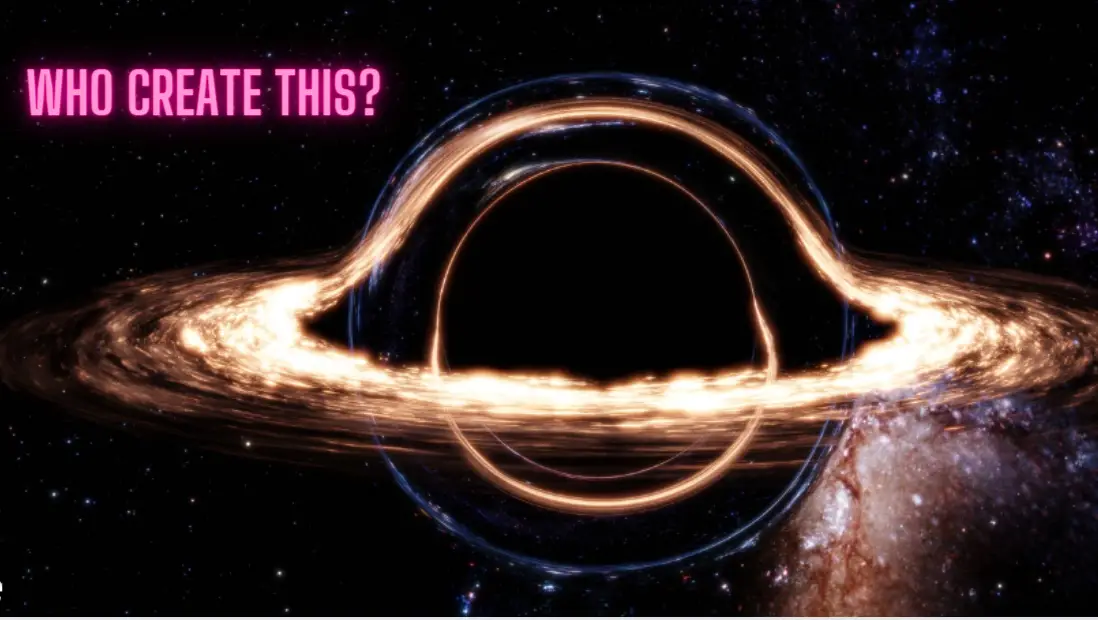Introduction: The science fiction epic “Interstellar,” directed by Christopher Nolan, took moviegoers on a mind-bending voyage across space and time, exploring the depths of the universe as well as humanity’s struggle to survive. The enigmatic black hole known as Gargantua was one of the aspects of the movie that managed to captivate the audience the most. The audience’s curiosity about Gargantua’s background and characteristics was maintained throughout the entirety of the movie. In this piece, we explore the murky waters of cinematic conjecture in an effort to shed some light on a topic that has perplexed moviegoers for a long time: Who was the one who built Gargantua?
The Wormhole and Gargantua: In the movie “Interstellar,” a group of astronauts travel through a wormhole that has just been discovered close to Saturn in order to look for another habitable planet outside of our own fading Earth. Gargantua is the name of the ship that they travel on during their journey. This wormhole, which is a cosmic tunnel in spacetime, was not constructed by humans but rather by a mystery higher intellect that want to assist mankind in its fight for survival. It acts as a quick cut, linking far-flung regions of the universe and providing access to uncharted worlds in the process.
The incredible Gargantua, a colossal black hole that produces a gravitational pull so powerful that it warps spacetime around it, can be found in the neighborhood of the wormhole. It is a sight to behold. During the course of their voyage, the crew of the spacecraft Endurance comes face to face with Gargantua, which then becomes the primary source of both interest and anxiety in the narrative.
Theoretical Foundation In order to appreciate where the name “Gargantua” came from, we need to examine the theoretical foundations that the movie is based on. The film “Interstellar” draws substantially from scientific concepts, in particular those pertaining to black holes and the laws of general relativity as outlined by Albert Einstein.
Black holes are generated when the remains of enormous stars collapse under the weight of their own gravity and become consumed by space. These cosmic objects are so massive and have such a strong gravitational pull that not even light can get away from them. Even while black holes in and of themselves are not produced by any one particular entity, they are natural events that take place as a direct result of the evolution of stars.
Although the origin of Gargantua, as well as that of the wormhole, is not specifically addressed in the movie, it is strongly indicated that a highly evolved civilisation or a “fifth-dimensional” higher intellect was responsible for the creation of these occurrences. This is also the case with regard to the wormhole. This civilization is portrayed as an entity that is outside of the constraints of traditional ideas of time and space.
Within the framework of the story told by the movie, this higher intelligence works toward the goal of ensuring the survival of the human species by giving people the tools necessary to discover other worlds with viable environments. This mysterious civilisation has provided humanity with the ability to overcome the barriers of interstellar travel and find a new home by engineering the presence of Gargantua and establishing the wormhole that is located around Saturn. Additionally, they have engineered the existence of Gargantua.
Although “Interstellar” leaves certain parts left to interpretation on purpose, it is possible that a higher intellect that acts on a level that is incomprehensible to humans was responsible for the construction of Gargantua. The goal of this civilisation is to provide assistance to humanity in its fight for its own survival and continued development. The film’s investigation of time, space, and the depths of human tenacity take place against the spectacular background of Gargantua, the awe-inspiring black hole.
The audience was attracted by the mystery of Gargantua thanks to Christopher Nolan’s vision, which, when paired with scientific hypotheses and inventive storytelling, created the perfect storm. The movie inspires feelings of awe and interest in its audience members, leading them to think about our role in the cosmos and the possibility of more advanced forms of intelligence guiding our trip.
In the end, the identity of the true inventor of Gargantua is unknown, which leaves room for interpretation and speculation. Despite this, the portrayal of Gargantua in the movie as a portal to the unknown artfully depicts humanity’s never-ending quest for knowledge and our enduring fascination with the grandeur of the universe.
![]()
